What Is The Difference Between Icing And Frosting?
Are icing and frosting the same? There are more differences than you think.
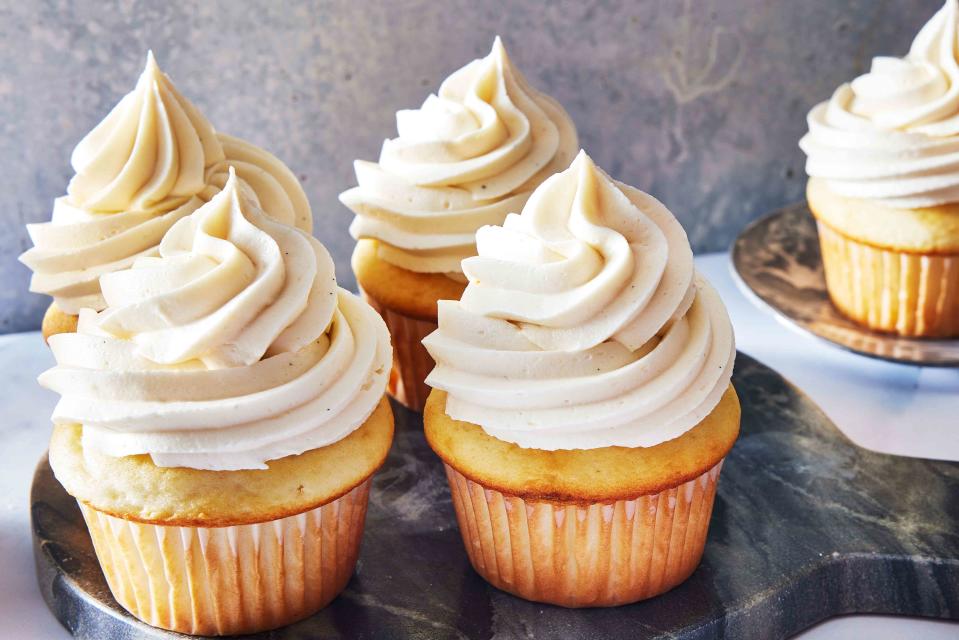
Caitlin Bensel; Food Stylist: Torie Cox
Frosting, icings, glazes—it's all the same thing, right? Well, it's not quite that simple. There is a difference between frosting and icing, even if the terms often get used the same way in recipes. It boils down to differences in consistency and ingredients, and therefore how they then get used in baking.
Here, we'll explain the differences between frosting and icing, plus the different kinds of each you should know.
Related: How To Frost A Cake Like A Professional
Frosting And Icing: What Are The Differences?
We are guilty of often using these terms loosely and interchangeably, but there is a distinction between the two.
Frostings are generally thicker, fluffier, and used for coating not just the outside but also between layers of baked goods. Some frostings use a meringue base, while others simply rely on butter and sugar.
Icings on the other hand are typically thinner and harden to a firm consistency, like royal icings, for example. Both contain sugar, but each is best suited to different baking tasks, from piping intricate designs on cookies to building layer cakes.
What about glazes?
Glazes tend to be the thinnest of the three, but the consistency can range. Even when thicker, glazes tend to set less hard than icings do. They are usually comprised of just powdered sugar and a liquid, like lemon juice or milk, and can be simply stirred together in a bowl. You often pour or spoon a glaze over baked goods, such as a lemon loaf.
Types Of Frosting
These are some of the common frostings that we use on everything from layer cakes to cupcakes.
American Buttercream Frosting
Perhaps the simplest of all frostings, American buttercream beats butter, powdered sugar, often a splash of milk or cream, and flavorings (like cocoa powder, spices, or even caramel sauce) together. It tends to be sweeter than other buttercreams, but is egg-free and quick to make.
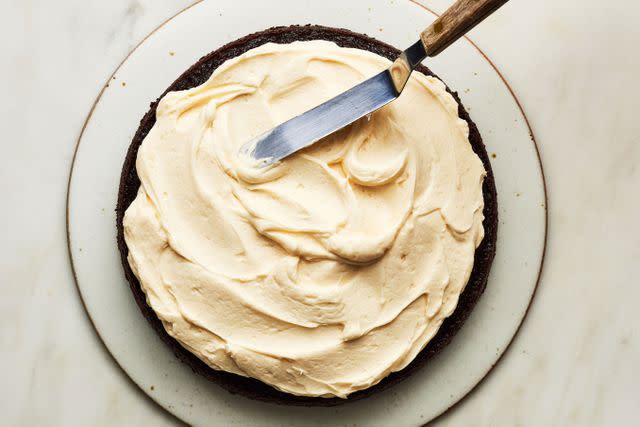
Victor Protasio, Food Stylist: Ruth Blackburn, Prop Stylist: Christina Keely
Swiss Meringue Buttercream
As the name indicates, this buttercream has a meringue (whipped egg white) base. It heats granulated sugar and egg whites on a double boiler before whipping the mixture to stiff peaks and gradually beating in softened butter. This technique creates an incredibly light and fluffy frosting that beautifully pipes into all sorts of designs.
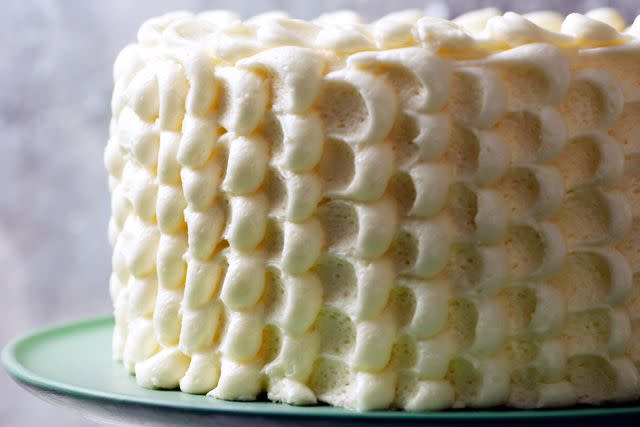
Iain Bagwell
Italian Meringue Buttercream
This frosting, like Swiss Meringue Buttercream, is made from whipped egg whites, but they aren't cooked before whipping. Instead, you stream a hot sugar syrup into the mixer as the egg whites whip, before gradually adding softened butter. Italian meringue buttercream is also less sweet than American buttercream and perfect for layer cakes. Not only does this buttercream pipe beautifully, but it's super stable, making it perfect for cakes on hot summer days.
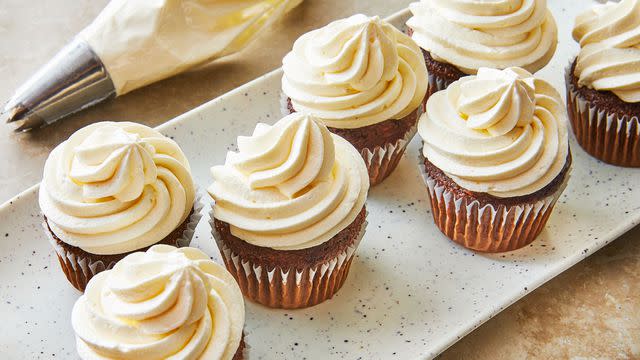
Cream Cheese Frosting
As the name alludes, this frosting combines a base of cream cheese and butter, alongside powdered sugar and flavorings to make a sweet and tangy topping for cakes. It's most similar to American buttercream in technique, but thanks to zingy cream cheese, typically a little less sweet. It's classically used on carrot cakes, and also on our famous Hummingbird Cake.
Mascarpone frosting is nearly the same as cream cheese frosting, but uses the soft Italian cheese instead of cream cheese as the base of the recipe.

Ermine Frosting
This is an old-school fluffy frosting that's also often called "boiled milk frosting." Its nickname clues you in as to how it is made. To prepare this frosting, you heat milk, flour, and sugar before whipping the mixture into butter. It's egg-free, and once you get the hang of it, pretty easy to make.
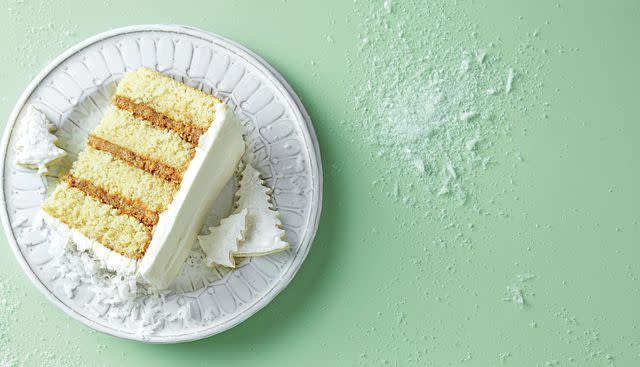
Caramel Frosting
Caramel frosting is a tricky one because it's made from a hot caramel that is whipped into a spreadable frosting. It sets quickly and is also prone to graininess the same way a caramel sauce is. In the South, this frosting is in regular rotation, but its less popular outside the region (for now!). Traditionally used on an Old-Fashioned Caramel Cake, you can also use it on other cakes.
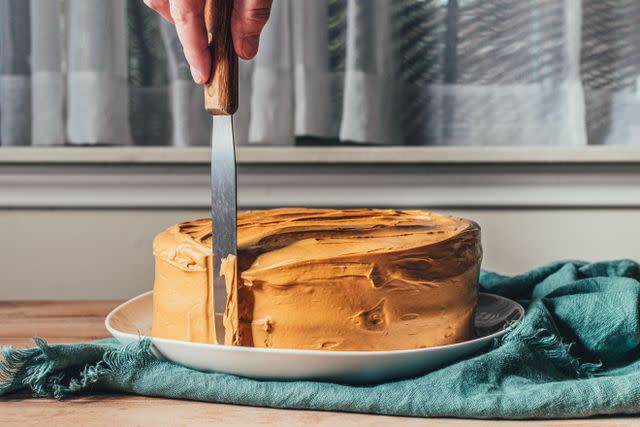
Courtney West / Southern Living
Types Of Icing
Here are a few common types of icings and how they are used in baking.
Royal Icing
Frequently used during the holidays on sugar cookies, this icing is perfect for flooding and creating intricate piped designs. Plus, it hardens nicely, for a beautiful and mess-free cookie design. It's made using egg whites or meringue powder (our go-to recipe uses the latter), powdered sugar, and water. We also have a Cookie Icing recipe that works just the same as royal icing, but is egg-free and made with corn syrup.
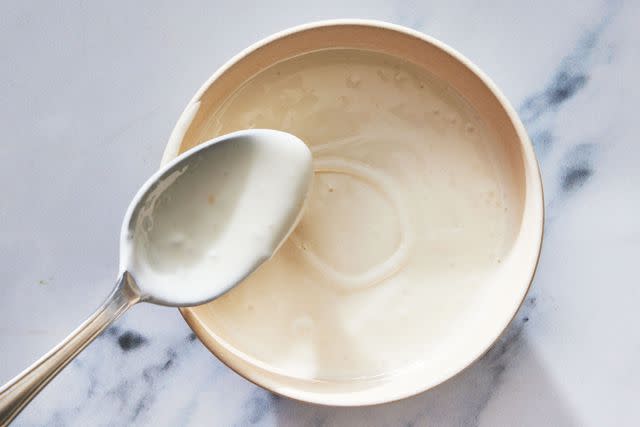
Caitlin Bensel; Food Stylist: Torie Cox
Ganache
This is a chocolate icing made from pouring hot cream over chopped chocolate. It sets glossy, whether poured on top of cake layers or drizzled over a pie. When more chocolate than cream is used, ganache cools to a firmer texture that is rolled and used for chocolate truffle. Ganache can also be whipped into a fluffier consistency that is closer to buttercreams in texture and can be applied to cakes similarly.
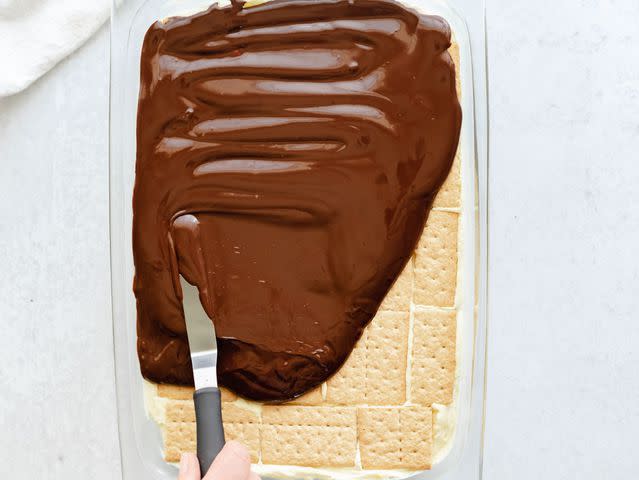
For more Southern Living news, make sure to sign up for our newsletter!
Read the original article on Southern Living.

